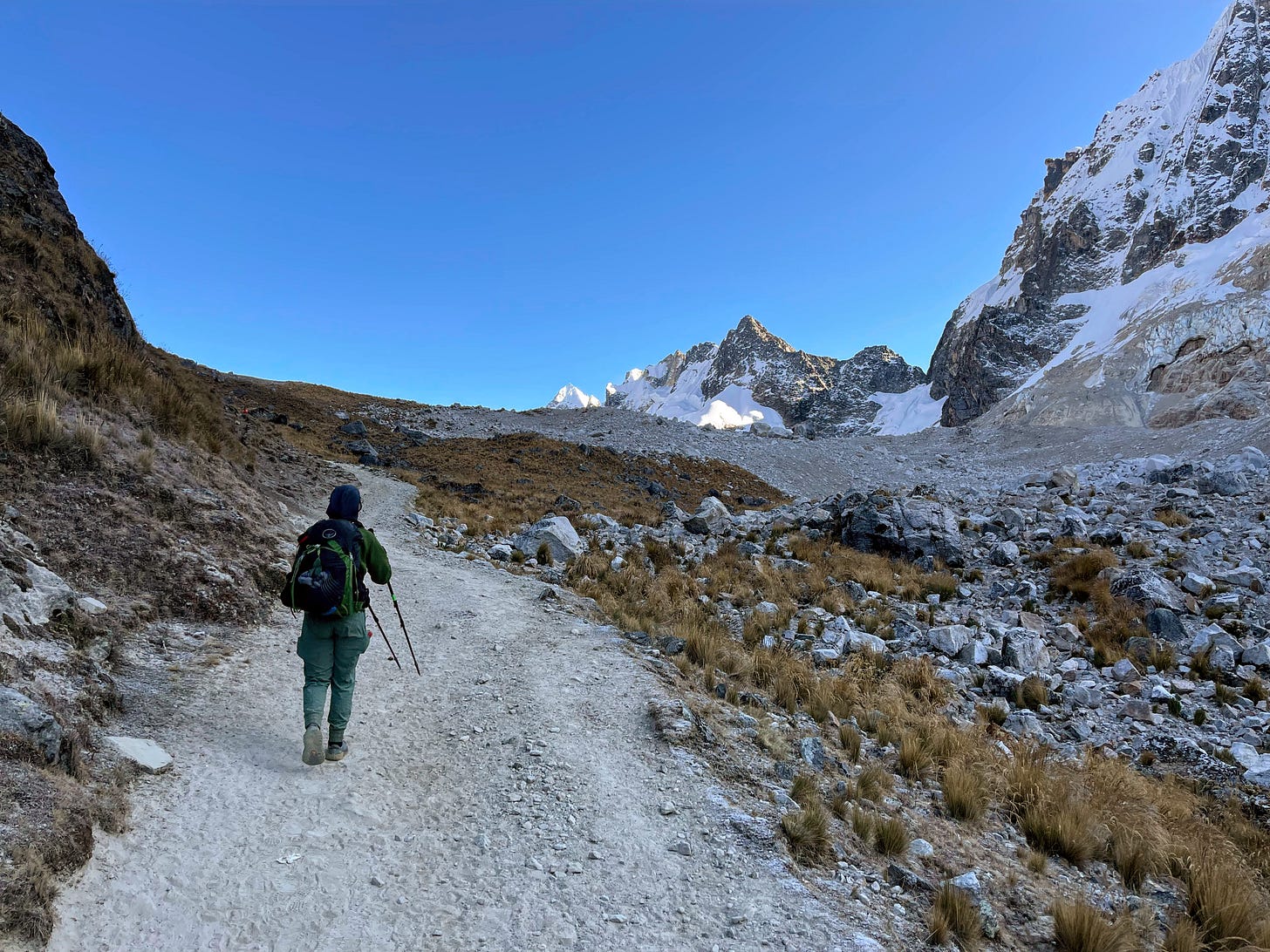Dealing with Fatigue and Boredom Backpacking
What you should be eating, drinking, walking-like and thinking about on the trail.
One of the most common questions I get from friends on their first trip is, "will the trail be too hard?".
It won't be too hard, but it will be tiring and sometimes boring.
It can be like the image we see from Patagonia of people roasting s'mores on a campfire, meditating next to a lake, and journaling every night. However, more likely than not, for the first trip, there won't be much energy for these activities. It may be hard to wake up in the morning, and necessary to nap at camp. Even if I can easily hike the amount I'm backpacking, it's more challenging since I'm sleeping outside and wearing a heavy backpack.
To prevent getting exhausted and bored, here are a couple of things I recommend:
Divert the mind
After a week of back-to-back zoom calls, walking in nature can feel boring. If that's the case, I spend time planning something in detail. Sometimes it's the plot in a book I'm writing, a new project I'm starting, a party I'm throwing, or a dish I want to make (the latter was a recommendation from my friend's bike rides). It's sometimes helpful for real life and always fun on the trail.
If I don't have energy for any of the above, I listen to music, a book on tape, or a friend talk—a one-way conversation to save me energy. Or, I will repeat a phrase or part of a song to myself. For example, I will sing "I did it" from Taylor Swift's "No body, no crime," chant "row row row your boat," or repeat "I can't go on. I'll go on" by Samuel Beckett via Paul Kalanithi.
Many people think we are constantly in touch with nature while hiking. The truth is that no one does or expects that—do whatever works.
Walk smart
As silly as it may sound, I monitor how I walk to get the most out of each step.
For example, I try to walk at a consistent pace—even if it's slow—to use less energy and keep my morale up.
Also, when the trail is not too steep, I try to walk on dirt over rocks since hiking on soft ground for hours is easier. Sometimes, stepping on dirt can mean stepping on plants or eroding the trail; in those cases, I always choose rock.
Another thing I do is plant my whole foot on the ground instead of just the balls of my feet. Even when I rest my feet, I keep my feet flat on the floor instead of just sitting with my heels up.
Furthermore, I try to take smaller steps over larger ones. For most women, outdoor staircases require taking much larger steps than is comfortable. On these staircases or steep sections, we can try zig-zagging across them to create "switchbacks." Having even footing keeps my feet from tiring out.
Lastly, I use walking poles. Poles help distribute weight and are great for walking downhill and uphill. Some of us may hike all the time without them and not see the point: rent a pair and try it out.
Pack right and light
I detail what to pack here, but the tl;dr is pack light.
It's also essential to pack a bag so that the heaviest stuff is in the middle and the items needed the most during the day (i.e., water, snacks, and sunscreen) are at the top. Water is often one of the heaviest, making the previous sentence hard to do—in that case, spit up the water.
Additionally, make sure to choose a backpack that fits well. We want most of the weight in the pack to be resting on our hips. Also, tighten the bag, so it doesn't move and so there are no loose straps or items waving around.
Break strategically
I take breaks every two hours or so to ensure I'm not over-exerted. I also try to time my breaks around something in nature, like swim-holes, waterfalls, viewpoints, or rock formations. These landmarks provide something to continually look forward to on the trail.
When it's hot, it can be helpful to start early and then pause in the middle of the day at peak heat (generally 11-3). Long breaks make me worry about getting into camp, so I don't personally do them, but my partner, for example, finds them energizing.
Lastly, schedule a rest day at home. If there is a concern about how tiring the trip will be, build that into the schedule.
Drink and eat consistently
Every hour or so, make sure to eat something and have some electrolytes in a bottle or tablet form—this is the best way to keep energy up. I almost always need snacks more frequently than I break, so I keep a couple of bars and electrolyte tablets in my pocket.
Lastly, I highly recommend bringing a water bladder. Similar to the above, I get thirsty long before I take a break, and the bladder allows me to drink water whenever I want.
Be goal-oriented
Remember why we go out and backpack. It might be to see a mountain or prove to ourselves that we can do something. Whatever it is - remember the goal.

